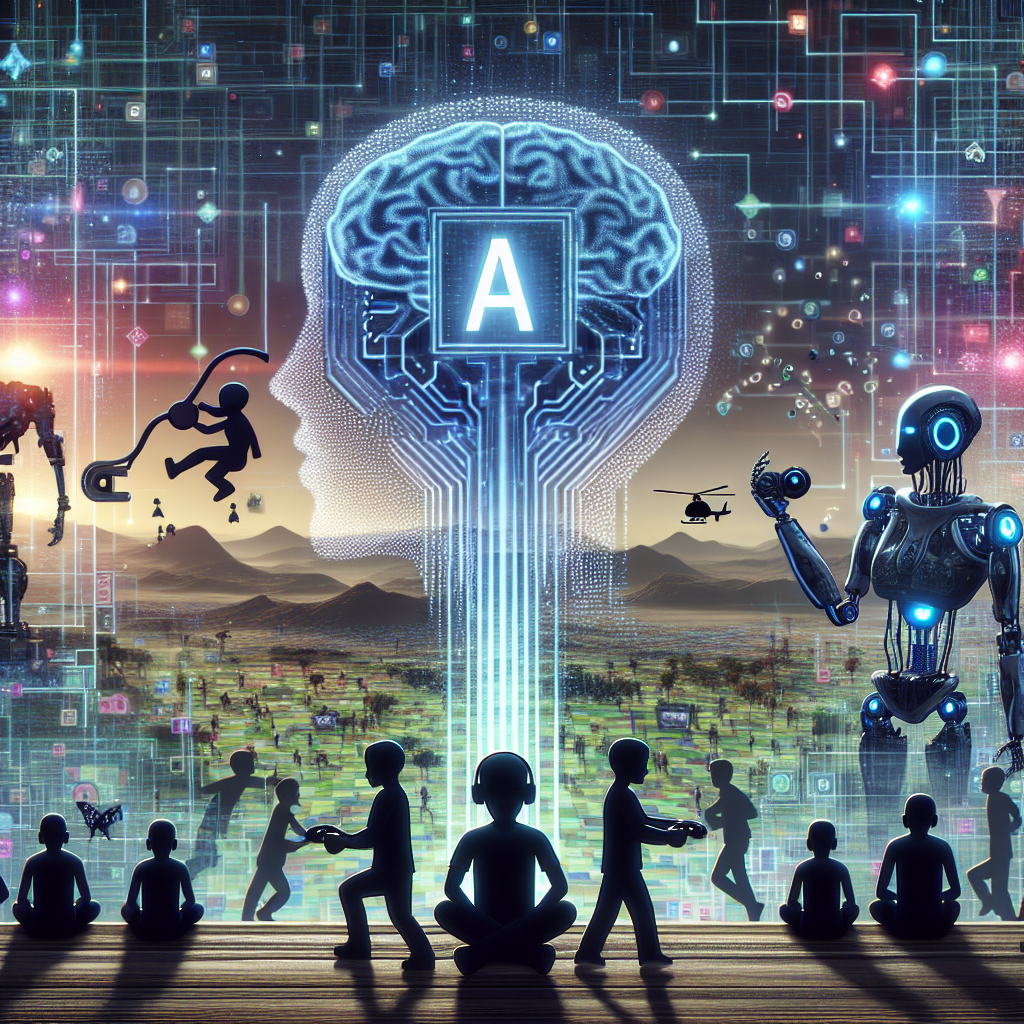Artificial Intelligence (AI) has significantly transformed various industries, including the gaming industry. One of the key areas where AI has made a significant impact is in improving accessibility in video games for people with disabilities. In recent years, there has been a growing recognition of the importance of making video games more inclusive and accessible for all players, regardless of their abilities. AI-powered technologies have played a crucial role in this effort, by enabling developers to create games that can be enjoyed by a wider range of players, including those with disabilities.
One of the key ways in which AI has been used to improve accessibility in video games is through the development of assistive technologies. These technologies use AI algorithms to help players with disabilities navigate and interact with games more easily. For example, AI-powered tools can be used to provide real-time audio descriptions of in-game events for visually impaired players, or to generate subtitles for deaf players. These tools can also be used to create personalized gameplay experiences for players with mobility impairments, by adapting the game controls to suit their individual needs.
Another important application of AI in improving accessibility in video games is in the development of intelligent in-game assistants. These virtual assistants can help players with disabilities by providing guidance, hints, and tips to help them progress through the game. AI-powered assistants can also be used to provide feedback and support to players in real-time, helping them overcome challenges and improve their skills. By using AI to create these intelligent in-game assistants, developers can ensure that players with disabilities have a more enjoyable and rewarding gaming experience.
In addition to assistive technologies and in-game assistants, AI has also been used to improve the overall design and user experience of video games for people with disabilities. For example, AI algorithms can be used to automatically adjust the difficulty level of a game based on the player’s abilities and preferences. This can help players with disabilities enjoy the game without feeling frustrated or overwhelmed by overly challenging gameplay. AI can also be used to optimize the visual and auditory elements of a game to make them more accessible to players with disabilities, such as by enhancing color contrast or providing alternative audio cues.
Overall, the role of AI in improving accessibility in video games for people with disabilities is crucial in promoting inclusivity and diversity in the gaming industry. By leveraging AI-powered technologies, game developers can create games that are more accessible and enjoyable for players of all abilities, ultimately enhancing the overall gaming experience for everyone.
FAQs:
Q: How does AI help improve accessibility in video games for people with disabilities?
A: AI helps improve accessibility in video games for people with disabilities by enabling the development of assistive technologies, intelligent in-game assistants, and adaptive gameplay experiences tailored to the individual needs of players with disabilities.
Q: What are some examples of assistive technologies powered by AI in video games?
A: Examples of assistive technologies powered by AI in video games include real-time audio descriptions for visually impaired players, subtitles for deaf players, and personalized gameplay experiences for players with mobility impairments.
Q: How do intelligent in-game assistants benefit players with disabilities?
A: Intelligent in-game assistants benefit players with disabilities by providing guidance, hints, and tips to help them progress through the game, as well as real-time feedback and support to help them overcome challenges and improve their skills.
Q: How does AI optimize the design and user experience of video games for people with disabilities?
A: AI optimizes the design and user experience of video games for people with disabilities by automatically adjusting the difficulty level of a game, optimizing visual and auditory elements, and enhancing accessibility features to make games more inclusive and enjoyable for players of all abilities.

